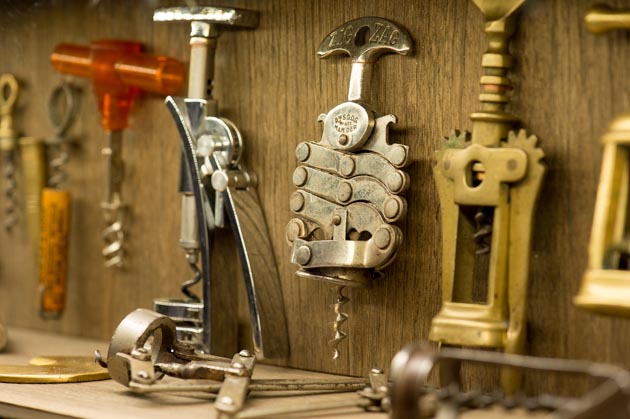The Wolf Post offers a professional service with free access, without subscription.
For this reason, a donation would also be a sign of appreciation for our work.
The most famous Food Valley in the world is located in Parma (Italy), declared in 2015 by UNESCO “Creative City of Gastronomy”, and its province, where numerous food and wine excellences are concentrated, starting with Parmigiano Reggiano. The first evidence of the best known cheese in the world dates back to the Middle Ages by the Benedictine monks.
Perhaps not everyone knows that in the nineteenth century Parma was already home to the most powerful tomato processing food industry and that, at the end of that century, Barilla was taking its first steps in the agri-food world with a small bakery.
In a context so rich in history and tradition, the Parma Food Museums gather the best of local culture on the subject, offering the visitor a cultural and sensory experience of rare uniqueness.
Let’s find out more from the words of Giancarlo Gonizzi, Coordinator of the Parma Food Museums.
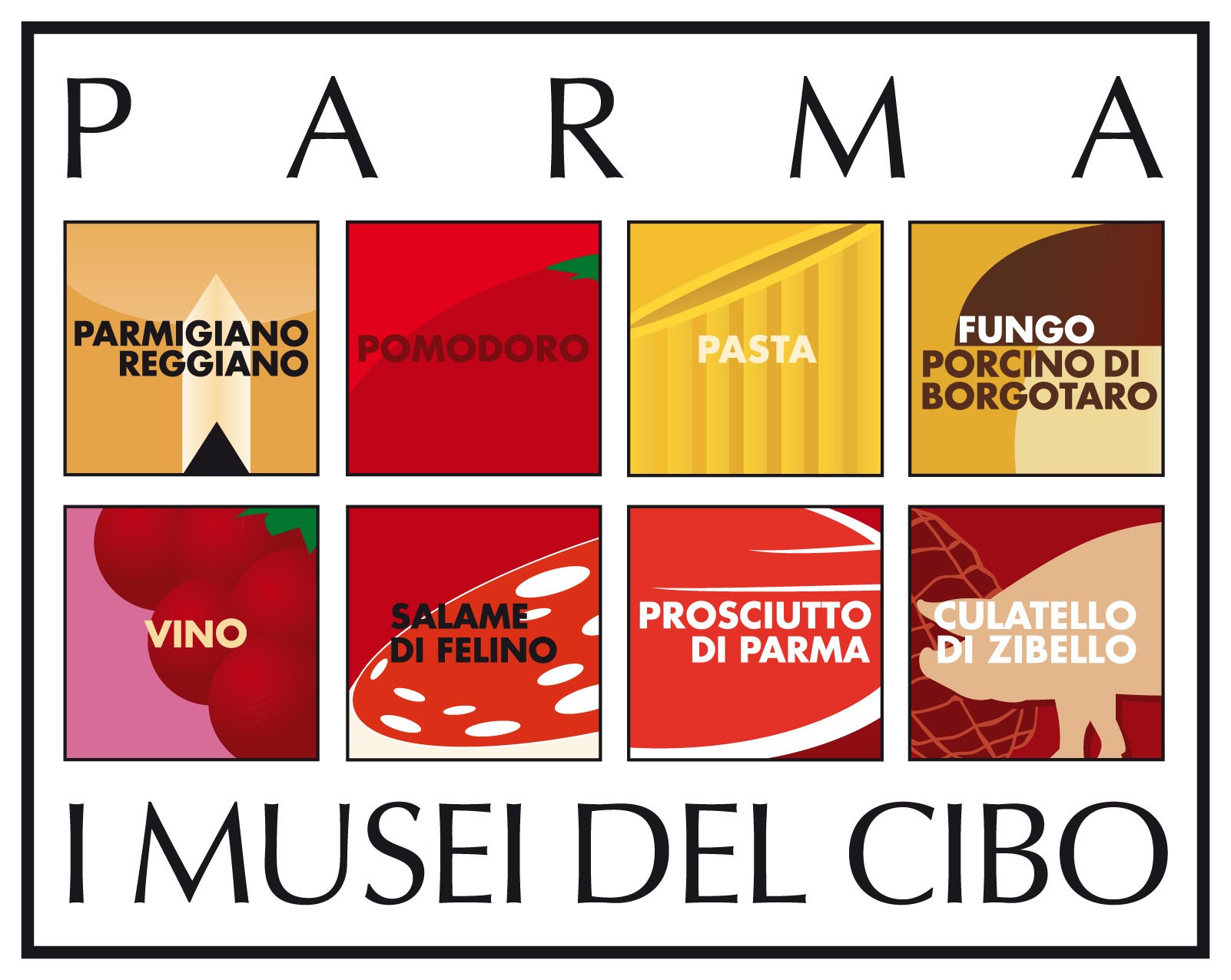
©I musei del Cibo- Parma- Museo del vino
What added value do the Food Museums represent for the city of Parma and for Italy as a whole in terms of culture and tourist appeal, including international ones?
Food has always been a strongly identifying element and every person recognizes itself in what they eat. Pasta, tomato, wine, Parmiggiano, cured meats clearly identify us, insert us into the great bed of the Mediterranean Diet and tell of a millenary culture that has been able to make the most of the territory, without impoverishing it and respecting it. The circuit of the Food Museums (today seven exhibition venues, eight next year), visited by 30,000 people a year before, the pandemic, tells the story of the culture that generations of men and women have been able to build, starting from a few simple elements. Museums tell the process of transforming raw materials into finished products, they make us understand our roots and trace a path of sustainability in front of us, making us know and love what we eat.
When and how was the idea of creating a real museum center in the Food Valley par excellence of Italy born?
Starting from 2000 the Provincial Administration of Parma, to enhance the agri-food sector of Parma, launched the projects of the International School of Cuisine (and Alma was born), of the roads of wines and flavors (and Parma today has three, while other Emilian provinces have only one each) and the project of the Food Museums, distributed in the territory (because it is from the territory that the products are born) on several locations, connected by an ideal “way of taste” that reaches from the Po to the Apennines.
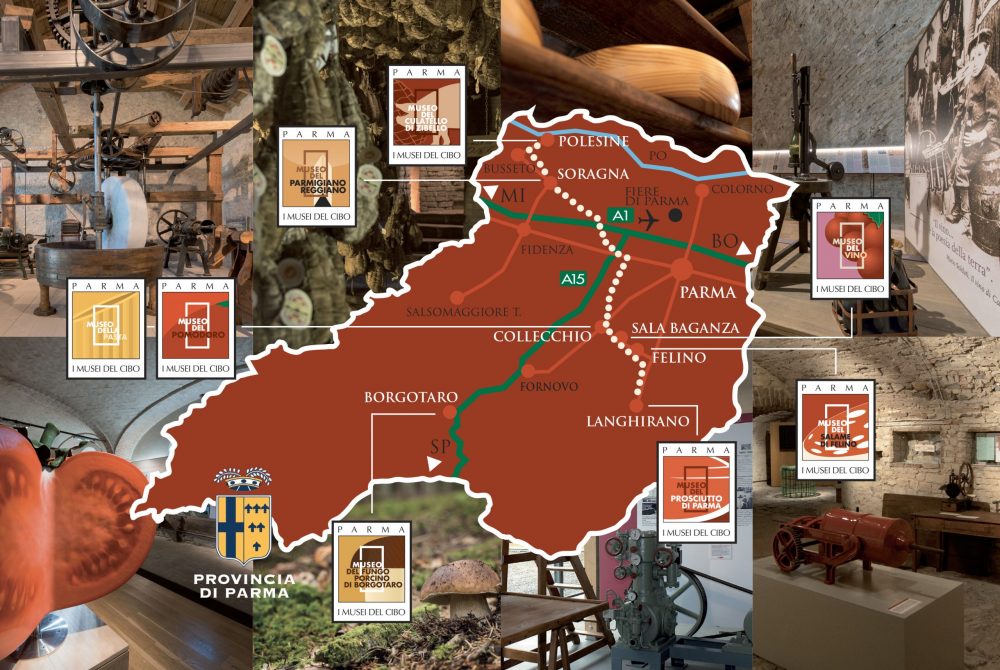
©I musei del Cibo- Parma
The centuries-old tradition of excellent products and good food could not be “seen”: the tourists, in addition to the restaurant, did not have a place where the culture of food could manifest itself. This is why seven museums were born in successive stages dedicated to: Parmigiano Reggiano, Pasta, Tomato, Wine from the hills of Parma, Salame Felino, Prosciutto di Parma and Culatello (and soon Porcino mushroom).
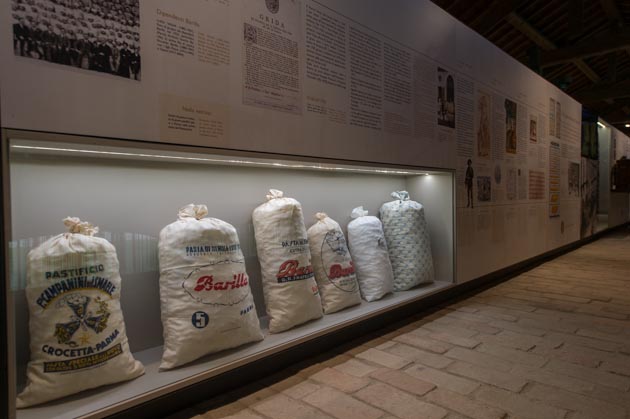
©I musei del Cibo- Parma- Museo della Pasta
What can the user who decides to visit the Wine Museum admire?
As in all Food Museums, the common thread is transformation. Here, how the grape becomes wine but, deeply linked to our territory and its stories, to differentiate itself from the dozens of wine museums already existing in Italy. Thus, the first room brings us together wine at the time of the Roman conquest of the Po Valley and the foundation of Parma, with archaeological finds from Parma, Sala Baganza and Fidenza and the birth of the “modern” way of drinking wine, straightforward and in the glasses.
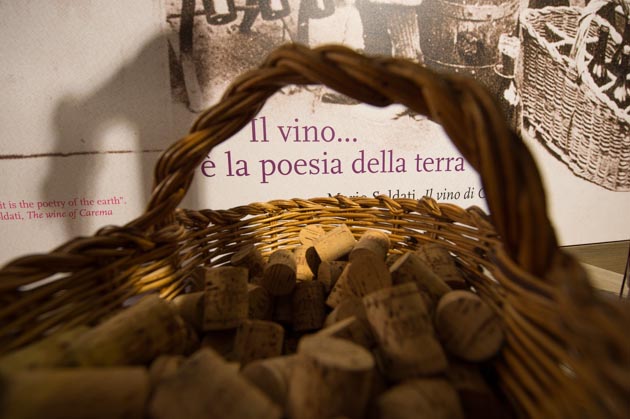
©I musei del Cibo- Parma- Museo del vino
The second room tells us the stories of the vine over the centuries; the third shows the tools of the cellar, while the suggestive underground Farnese icebox immerses us in the myths of wine, from prehistoric times to the present day. The barrel room shows us everything “revolves around wine”: barrels, bottles (with a valuable collection of ancient glassmaking tools to produce the bottles), corks, corkscrews, labels, ending with a space dedicated to Parma wines and its producers.
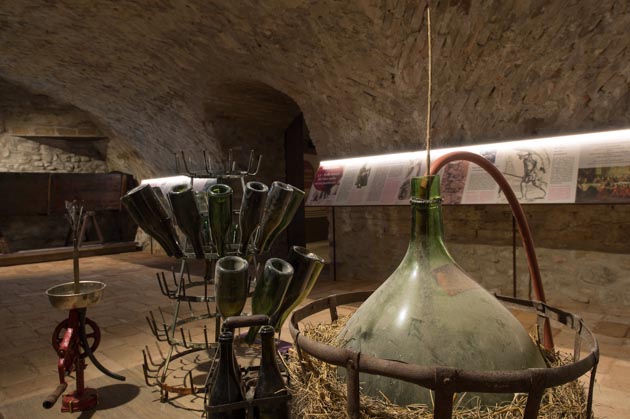
©I musei del Cibo- Parma- Museo del vino
How closely is the visit to the Wine Museum closely linked to that of the other proposals and how much, on the contrary, does it manage to have its own independence, with users who choose only this experience?
Each of the Food Museums tells stories that are intertwined with the territory and with other products. So pigs also meet at the Parmigiano Museum and the Tomato Museum; at the Pasta Museum we talk about tomatoes; at the Wine Museum we talk about other products. Each museum can, however, be visited with profit even without the others and manages to explain its supply chain in a profound way. The strength of the circuit is in the territory and the visit of several museums favors a broader understanding of the phenomena and processes. The very fact that there are very different accesses between the various museums makes us understand how the appeal of some products is able to generate interest even for a single visit. In addition, the number of visitors who buy the “Food Museums Card” is growing more and more, a ticket that is valid for one calendar year and allows you to visit, when you prefer, all the museums of the circuit.
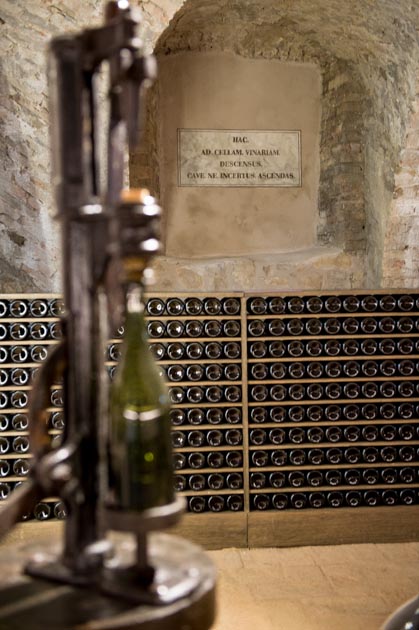
©I musei del Cibo- Parma- Museo del vino
Can you briefly describe how many and which museums it is possible to visit, in addition to the Wine Museum, and which curiosities can be admired in each of them?
Seven museums to learn about the great food richness of the “Food Valley”. The Parmigiano Reggiano Museum, in Soragna, tells the story of the great land reclamation and the birth of the “King of Cheeses”, but also the history of cheese grater and the oldest “Denomination of Origin” in the world: 1612. The Pasta Museum in Collecchio preserves the oldest known industrial spaghetti (1837) and an entire, extraordinary pasta factory from the mid-nineteenth century, a mill, the dies of the hundred most popular pasta shapes, the evolution of the colander.
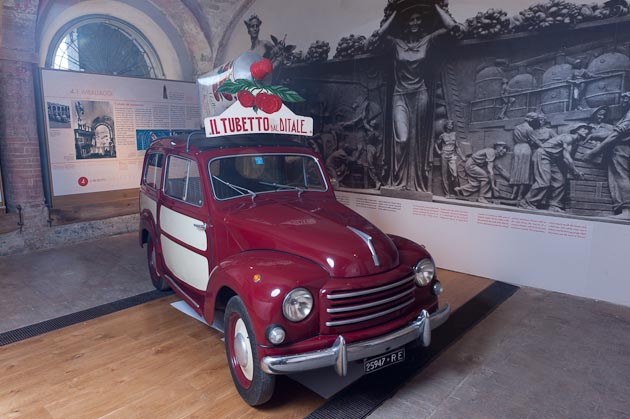
©I musei del Cibo- Parma- Museo del pomodoro
The Tomato Museum (Museo del Pomodoro), also in Collecchio, in addition to an entire production line of the preserve, exhibits a collection of 105 historical cans with all the Italian brands active in 1938 and an advertising Topolino surmounted by a giant tube. And it houses a collection, unique in Italy, of 360 different can opener models, from the first of 1855 to the present day. The Salami Museum, set up in the suggestive cellars of the Castello di Felino, shows us a Renaissance cuisine and makes us relive, through numerous tools, the humble but precious activity of the butchers (with a specimen of the butcher’s cloak and bicycle) who handed down for millennia the art of charcuterie.
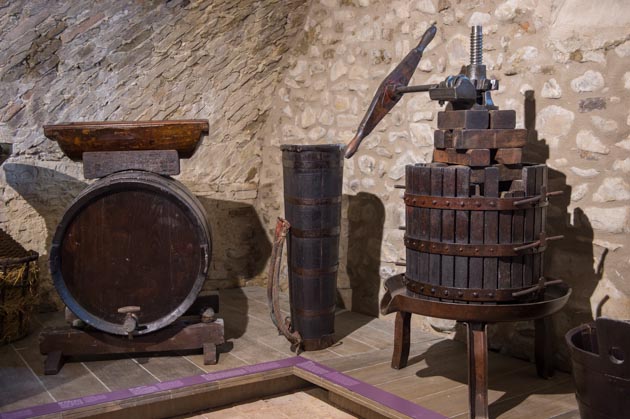
©I musei del Cibo- Parma- Museo del vino
The Ham Museum, in Langhirano, tells us about pig breeds, the precious salt of Salsomaggiore and the various salts of Italy, the world, the butchery and shows us an ancient delicatessen from the early twentieth century and the production techniques of hams. The Culatello Museum in Polesine tells the story of the great river Po and its territory, the oaks and black pigs, the figure of Sant’Antonio Abate, closely linked to the figure of the pig, and the Spigaroli family, Giuseppe Verdi’s butchers and today restaurateurs of ‘excellence. The “Galleria dei Culatelli” to be crossed in silence, enjoying the aromas and scents of the seasoning, makes the experience unique and unforgettable. Umbral and mysterious the Porcino mushroom, already known to the men of the Terramare, loved by the Roman emperors and a delicious ingredient of Renaissance cuisine, tells the legends of the forest and the tradition of a community, dedicated for centuries to its collection, conservation and marketing.
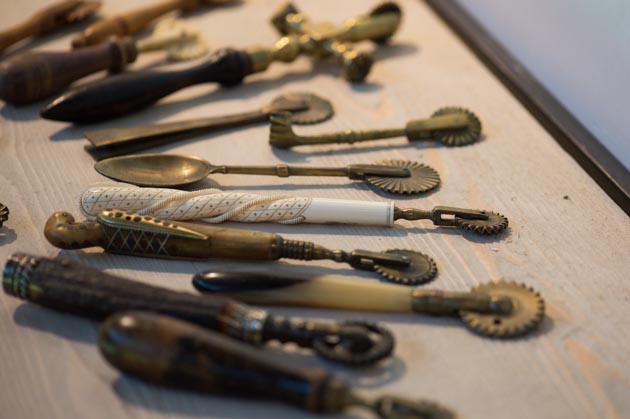
©I musei del Cibo- Parma- Museo della pasta
What role do museums such as those of food play in the dissemination of food and wine culture (and not only), especially among young people?
What enters our mouth becomes part of us. It is essential that quality and proper nutrition trace the guidelines of our eating. Because those who eat well also think well. All the Food Museums have a wide educational offer, aimed mainly at schools, but also for families, with workshops and playful activities focused on food education and on the understanding of the scientific phenomena that govern the birth of products (how does milk become cheese? Why does salt preserve meat? …) A fruitful collaboration with local schools (which are based in the same municipalities as the Museums) brings thousands of children every year to learn about the history and culture of our territory. Several European projects then involved the Food Museums and professional schools (Agriculture, Hospitality, Tourism) by proposing in-depth activities for the various addresses. Museums are places of ongoing formation and for this reason they are precious garrisons for the culture of the community.
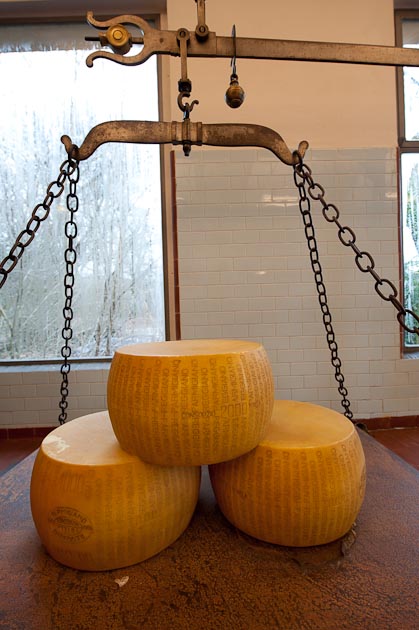
©I musei del Cibo- Parma- Museo del Parmigiano Reggiano
What are the objectives to be achieved in the near future and / or projects that have Parma’s food museums as protagonists?
2022 foresees the opening to the public of the Porcini Mushroom Museum of Borgotaro – the only PGI mushroom in Europe – with a broad insight into the culture of the forest and the process for the construction of the Museum dedicated to the Black Truffle of Fragno PGI has already begun. , based in Calestano. The Museums then have a mascot – a friendly explorer hare – which will mark many of the activities designed for children and teenagers. 2022 will also see the debut of the new family ticket: a single entrance for all family members, to facilitate the participation of adults and children together, the real key to building solid and lasting experiences and skills. But to talk about the future of the Food Museums it would take another interview, there are many new things that are boiling in the pot: a special recipe book, online publications on demand, visits with tastings. To ensure that the Food Museums are truly and increasingly a unique experience for all senses and for all tastes.


